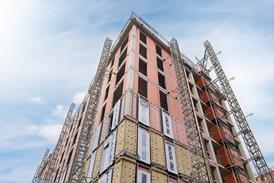Taken together the neighbourhoods contain all the usual ingredients of decline and disadvantage. They were places where the economic base which originally sustained them had collapsed or substantially contracted. Dwelling conditions were generally below average, associated with unimproved, older dwellings or with the less popular locations and designs of postwar council housing. In the inner city areas there was the familiar picture of low quality private renting with overcrowding and lack of amenities. All were disadvantaged according to the conventional indicators of unemployment, poverty and deprivation but there was substantial variation in relation to physical appearance, location within their respective urban areas, the impact of past regeneration initiatives and social composition.
They were all areas which suffered from longstanding stigma and negative reputations - the kinds of neighbourhoods in the minds of politicians, the media and the general population when discussion turns to social exclusion. Property values were low, in some cases there were abandoned and empty dwellings, council vacancies were less sought after then in other areas and crime was higher then average. In their local contexts, all had relatively low levels of home ownership.
Perhaps the most general point to emerge was that these areas did not lack social cohesion in the sense that there was a strong sense of belonging and attachment, much evidence of mutual support and assistance and a shared view of what constituted a "good neighbourhood" which cut across age, gender and ethnic group.
Nevertheless, the low quality of the physical environment and particularly the loss of "landmark" buildings, empty houses and boarded-up shops contributed to a strong sense of general decline and deterioration. The need for a degree of residential stability was seen as a particularly important factor in retaining commitment to an area and a healthy level of social interaction among residents. High population turnover undermined trust, familiarity and generally weakened the social fabric of a neighbourhood.
There are, of course, no easy answers. But from a housing perspective there are some lessons which emerge from this research. Most centrally, the physical environment matters a great deal to residents both directly in improving living conditions and indirectly in conveying the feeling that something positive is happening. The widespread recognition that to date much regeneration activity may have achieved little else than diversify tenure structures, refurbish dwellings and produce some innovative design changes to unpopular blocks should not lead to a downgrading or retreat from housing investment. Difficult decisions need to be taken about the long-term viability of some neighbourhoods. And this research shows that disadvantaged areas have highly varied future prospects. But longer and medium term investments in, for example, training and wider aspects of economic development and social regeneration need to proceed hand-in-hand with housing investments. Equally, investment in housing needs to be part of a wider physical regeneration to encompass shops, older, historic buildings and community facilities. In the face of shop closures, the deterioration or demolition of socially and historically important buildings and the (re)appearance of empty houses, new housing developments or major refurbishment schemes can do little to overcome a pervasive sense that a community has lost its heart and the local authority has lost interest.
While there are often valid reasons for vacant dwellings being left empty in the eyes of housing professionals, local residents find it difficult to understand the presence of empty houses in a community where local young people need accommodation. In this context allocation policies were also seen as often insensitive to local needs and local social networks, particularly in relation to younger people who wanted to stay near family and friends. It was recognised however that there was a difficult balance between equity, wider housing strategies and more localised needs and demands.
There is a complicated and contentious relationship between social behaviour and physical form. Nevertheless, some of the studies did suggest that dwelling design and estate layout can facilitate or inhibit casual social interactions which are important in developing local social involvement and confidence. Layouts which produce pedestrian traffic past windows and doors, small scale landscaping features within estates, and cul de sac or square arrangements of dwellings were generally seen as positive features. Modest environmental improvements can also have disproportionately large effects on morale, particularly if they are community-led. On the other hand, there was a feeling that regeneration initiatives too often involved grandiose schemes which failed and which progressively sapped confidence and induced cynicism.
Strong and well-established local ties are an important ingredient of local social cohesion. But there was a need to open up many of these neighbourhoods to the world beyond through physical and social changes. They needed to become "joined-up places" connected to the wider urban areas within which they sat. There was a fundamental need to break down the psychological barriers to integration, both on the part of residents themselves and of other city dwellers. More reasons needed to be created for outsiders to go into these neighbourhoods and resources needed to be targeted on ways which enabled residents to take a greater part in the life of the wider area. To achieve this greater linkage was needed between urban development strategies and area regeneration initiatives.
Source
Housing Today
Postscript
Ray Forrest is Professor of Urban Studies at the University of Bristol. Ade Kearns is head of Glasgow University's department of Urban Studies.
Joined-up places? Social cohesion and neighbourhood regeneration is available from York Publishing Services, priced £10.95. Tel: 01904 430033.





















No comments yet